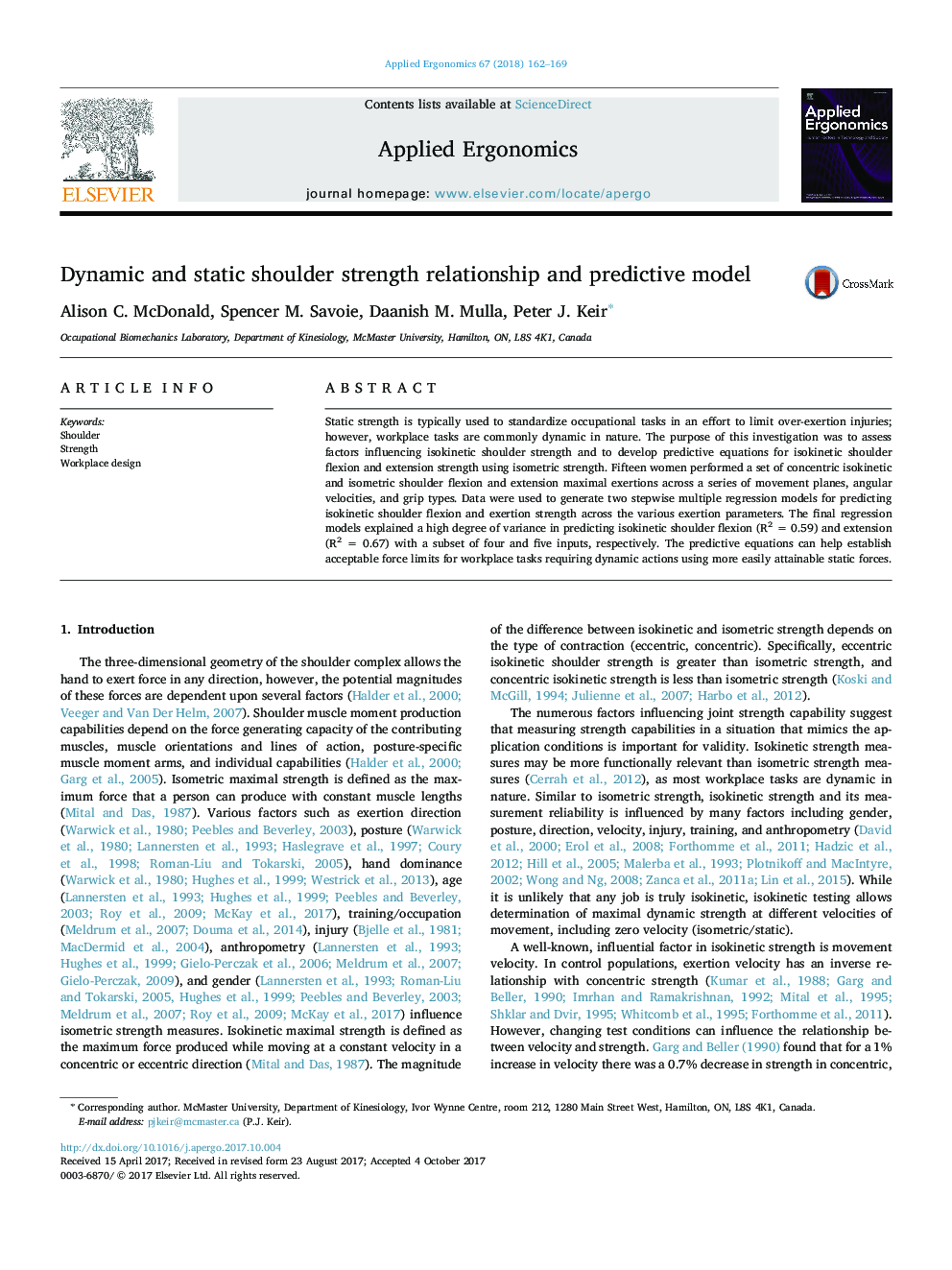| Article ID | Journal | Published Year | Pages | File Type |
|---|---|---|---|---|
| 6947714 | Applied Ergonomics | 2018 | 8 Pages |
Abstract
Static strength is typically used to standardize occupational tasks in an effort to limit over-exertion injuries; however, workplace tasks are commonly dynamic in nature. The purpose of this investigation was to assess factors influencing isokinetic shoulder strength and to develop predictive equations for isokinetic shoulder flexion and extension strength using isometric strength. Fifteen women performed a set of concentric isokinetic and isometric shoulder flexion and extension maximal exertions across a series of movement planes, angular velocities, and grip types. Data were used to generate two stepwise multiple regression models for predicting isokinetic shoulder flexion and exertion strength across the various exertion parameters. The final regression models explained a high degree of variance in predicting isokinetic shoulder flexion (R2Â =Â 0.59) and extension (R2Â =Â 0.67) with a subset of four and five inputs, respectively. The predictive equations can help establish acceptable force limits for workplace tasks requiring dynamic actions using more easily attainable static forces.
Keywords
Related Topics
Physical Sciences and Engineering
Computer Science
Human-Computer Interaction
Authors
Alison C. McDonald, Spencer M. Savoie, Daanish M. Mulla, Peter J. Keir,
